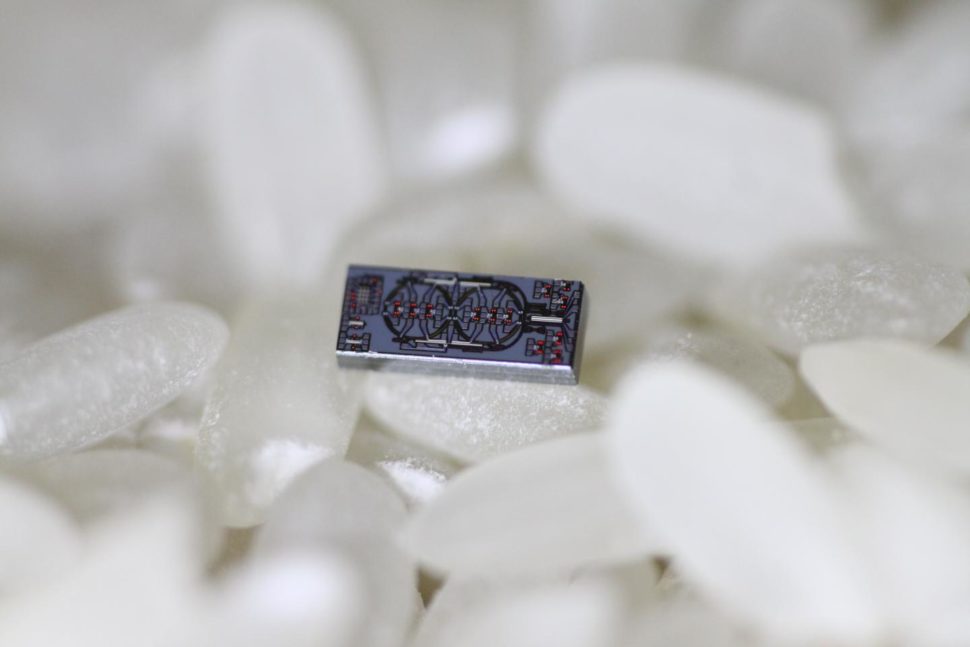Researchers are now using a new gyroscope innovation to improve drone technology.
Despite criminals using drones and the U.S. military shooting them down, drone tech continues to prove invaluable in certain industries. Researchers also continue to find new ways to innovate on current designs for efficiency, usefulness, and power.
Why Gyroscope Innovation Means More Capable Drones
Those familiar with gyroscope technology might know more about them than just the fact that they are used in those “hoverboards” kids love so much. Luckily for us, the gyroscope innovation discussed in this article is much more stable.
But to understand the innovation, it helps to know how gyroscopes figure into drone tech.
Though drones have many sensors, gyroscopes help them maintain balance. In fact, tilt sensors use gyroscopes and accelerometers to detect small movements. But the gyroscope compensation is what allows tilt sensors to function in moving mediums (like drones).
It has to work near instantly to keep the drone stable against wind and other moving forces. That’s why most drones have their gyroscopes fitted near the “geometrical center” of the drone.
You can read more about the hardware aspect of it all on this nifty Quora post.
But one of the main reasons drones used to be so big and so loud was due to the size of the various components — including the gyroscopes.
That’s what makes this California Institute of Technology breakthrough such an innovation. As you can see below, their gyroscope is smaller than a grain of rice.
The Trouble With Shrinking Gyroscope Size
The gyroscope above may pack a ton of power, but let’s get one thing straight: it is an optical gyroscope and not a mechanical one.
You don’t need to know the whole history of gyroscopes to appreciate the innovation. However, it does help to know what the Sagnac Effect, named for French physicist Georges Sagnac, is.
In short, it’s an optical phenomenon that creates a phase shift using light beams and general relativity. With that effect, you can calculate orientation using microelectromechanical sensors (MEMS). In fact, many modern-day cell phones use MEMS today.
Most other high-performance optical gyroscopes are bigger than golf balls. As such, they don’t make great candidates for portable needs. But if you make the gyroscope smaller, then you reduce the signal by which you measure the Sagnac Effect.
Yet, the Caltech invention is 500 times smaller than any other current state-of-the-art device on the market. It also detects phase shifts at 30 times smaller sizes than those other systems can.

A New Technique to Improve Drone Tech
Prior to this improvement, smaller drones had to rely on sensors with lower accuracy. As such, they had a poorer sense of inertial motion. That’s what gyroscopes measure after all — changes in forces acting on the object.
The Caltech team developed a new technique to improve performance and reduce the size. It’s known as “reciprocal sensitivity enhancement” because it affects both light beams.
The Sagnac Effect measures the difference between them, so it is, by nature, non-reciprocal. But the team, led by Ali Hajimiri, developed a way to improve the signal-to-noise ratio in their system.
You can find the full research paper on the Caltech Library site.
This could mean an uptick in more affordable and better-performing drones. It could, alternatively, mean improved higher-end commercial and industrial drones, as well.
But the technology isn’t limited to drone tech. In fact, it could extend into mobile phone motion sensing, too. Perhaps security systems will incorporate them or camera anti-shake applications can use them.
The one thing I worry about is how this innovation might go towards nefarious, surveilling, or privacy-invading uses. Hopefully, my paranoia remains unnecessary in the coming years.


















Comments (0)
Least Recent